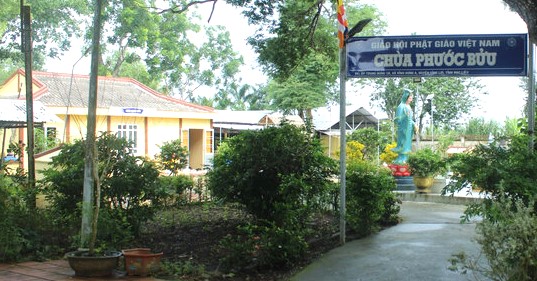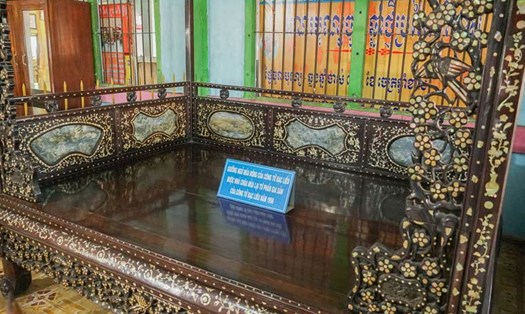That is the opinion of Vice Chairman of Bac Lieu Provincial People's Committee Ngo Vu Thang, after a field survey at Vinh Hung Ancient Tower .
Accordingly, the Vice Chairman of the People's Committee of Bac Lieu province requested the Department of Culture, Sports and Tourism, Vinh Loi district, after being ranked as a special national relic, to request expansion planning from 3 - 5 hectares.
To expand and upgrade the monument, Mr. Ngo Vu Thang proposed that Vinh Loi district have a plan to relocate Phuoc Buu pagoda inside the monument to facilitate promoting its value. At the same time, the Department of Culture, Sports and Tourism needs to invite experts to advise on how much to expand the area and in what direction to best maximize the value of the special national monument.

Previously, on July 18, Deputy Prime Minister Le Thanh Long signed Decision No. 694/QD-TTg classifying Vinh Hung Tower as a special National Monument .
According to many archaeological studies conducted around Vinh Hung tower in 1911, Mr. Lunet de Lajonquiere - a French scholar, was also the one who found and gave the tower the name Tra Long. In 1917, Mr. Henri Parmentier - another archaeologist continued to research and published archaeological results in the journal of the French Far East School with the name Luc Hien tower.
In May 1990, researchers from the Ho Chi Minh City Institute of Social Sciences came to survey and they found a number of unique artifacts of the Oc Eo culture such as sandstone statues, grinding tables, and ceramics. .. Among these is an ancient stele found in Phuoc Buu Tu pagoda next to the tower, with a Sanskrit engraving on it clearly stating the construction time of Vinh Hung tower around 814, corresponding to 892 AD. In particular, the stele also engraved the name of King Yacovan-Man (9th century).
Vinh Hung ancient tower was built on a land area of about 100m2, the height of the ancient tower is about 50m higher than the surrounding fields. The tower is about 8.2m high (measured from the base of the tower).
The wall at the base of the tower is about 1.8 m thick. The higher you go, the thinner the wall becomes. The roof of the wall is designed to gradually slope up towards the top of the tower, forming a rolling dome shape. The tower's door faces southwest, unlike Binh Thanh Tay Ninh ancient tower and other ancient towers of the Cham people in the central region, these towers often have the main door facing east.
Because Vinh Hung ancient tower has existed for thousands of years, experiencing sun, rain and ups and downs of history, the outside of the tower has been surrounded by moss and peeled off quite a lot. During the survey, archaeologists found many precious artifacts, currently up to 5 artifacts have been recognized as national treasures.






